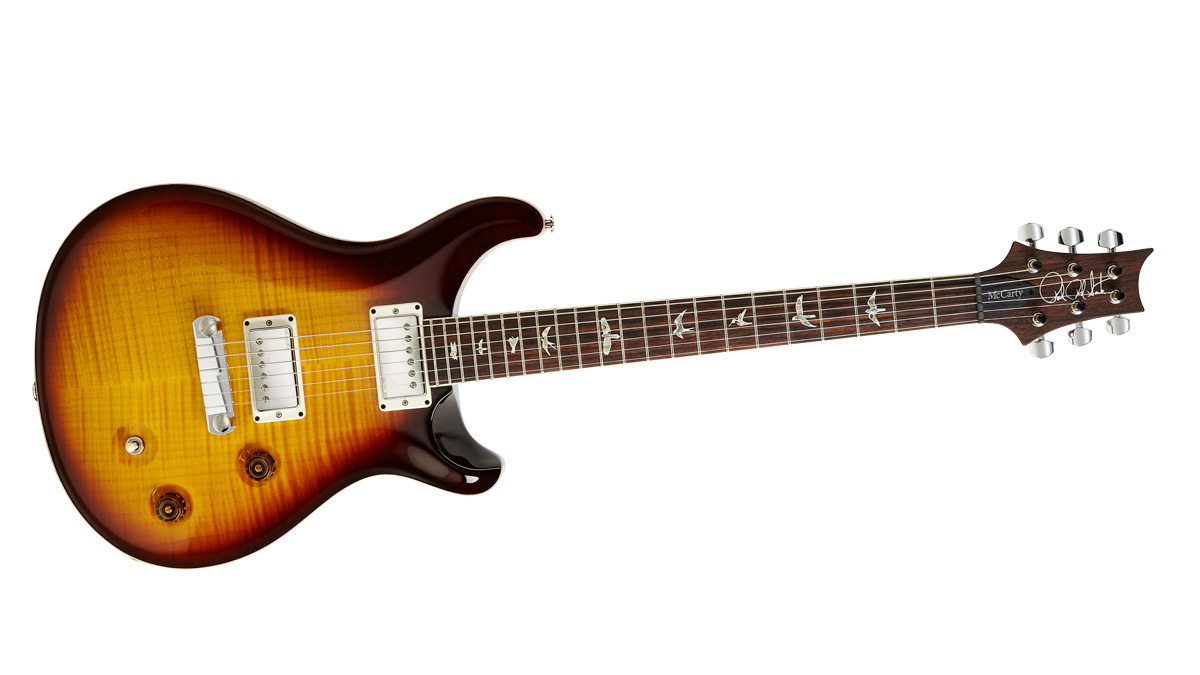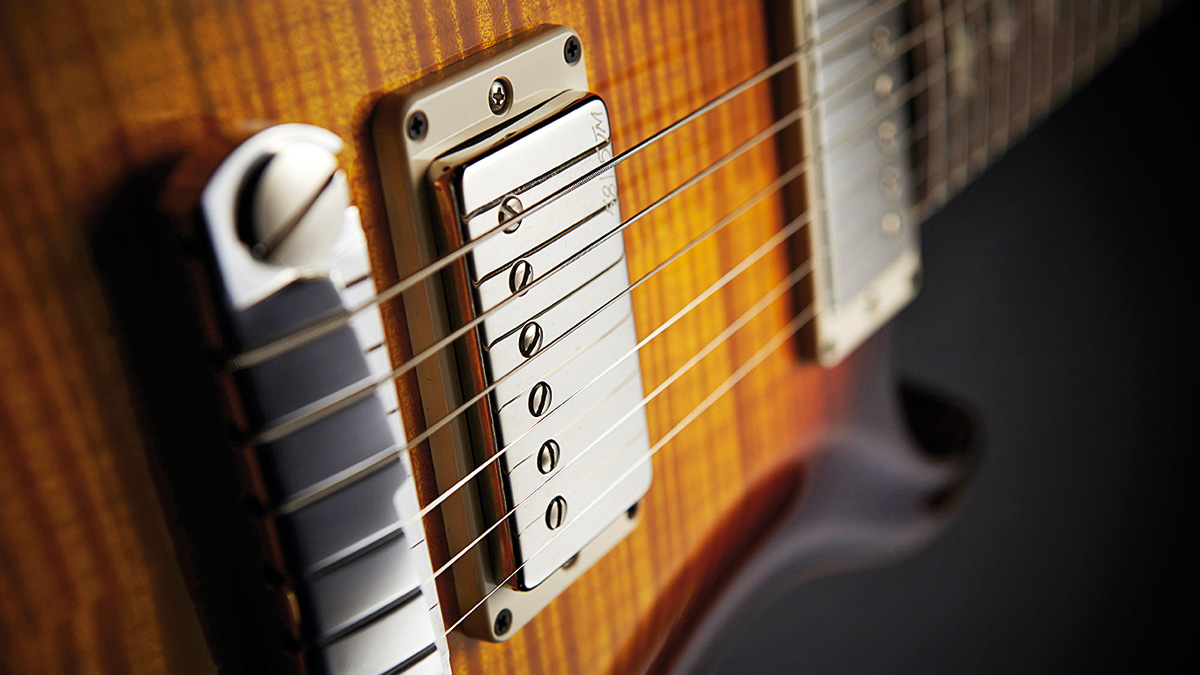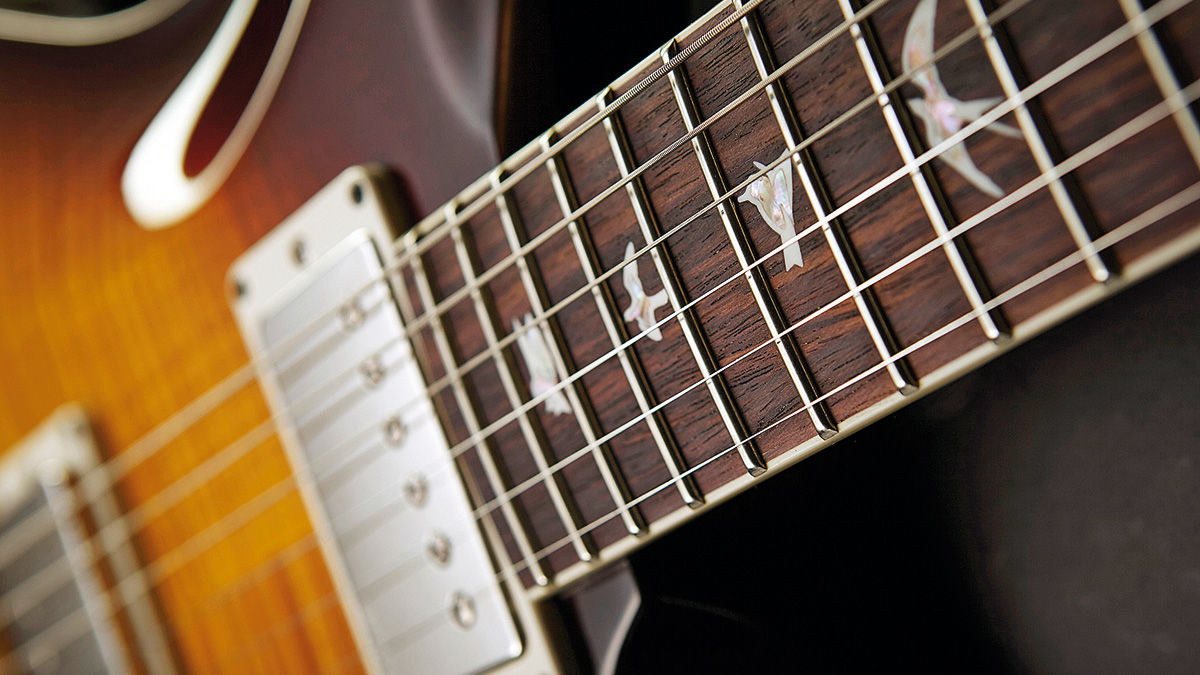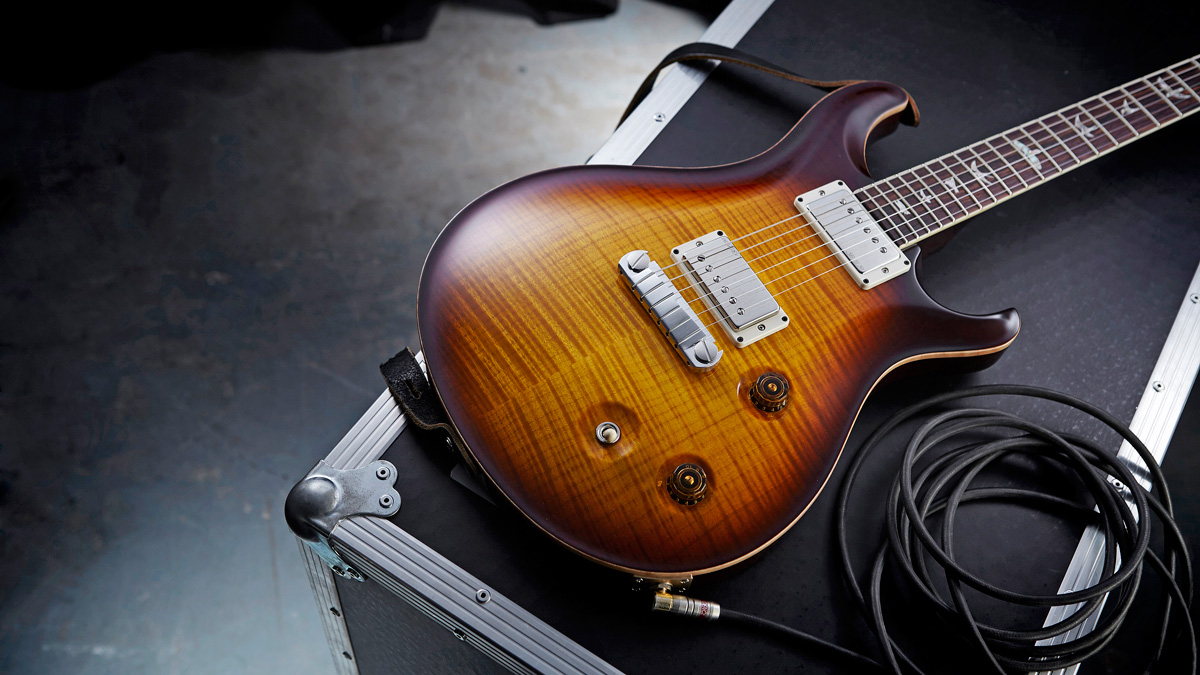MusicRadar Verdict
The McCarty has just gotten better - and then some.
Pros
- +
Superb, build, feel and sound. This McCarty is up there with the very best money can buy.
Cons
- -
£3,000 is a lot of cash; there's unfortunately no moon inlay option.
MusicRadar's got your back

PRS McCarty

PRS McCarty

PRS McCarty

PRS McCarty

PRS McCarty
Turn the clock back to the early 90s and Paul Reed Smith - who had started his production factory in 1985 - frankly, was looking for clues.
While his 24-fret guitars, such as the Custom, had certainly grabbed the attention of serious guitar players, not all of them were taken by its sound. So Smith re-designed his soon-to- be-calling card with a shorter 22-fret neck, introduced the intonated wrapover Stoptail bridge and re-evaluated the key ingredients of his build.
The first fruits of this 'new' PRS were the ultra high-end limited Dragon I in '92, followed by the regular production Custom 22 in '93, hinting at a more 'vintage' or classic-sounding and feeling PRS.
The McCarty Model, however, took the redesign further when it arrived the following year. And with it, the players who appreciated the classic Gibsons of yesteryear and had maybe found the Custom 24 a little too different seemed to have found their PRS.
It was little surprise that the McCarty's design had substantial input from Texas-based guitarist David Grissom, who'd been an early adoptee of PRS, and whom, after playing the 24-fret guitars for some time, had his own ideas for a slightly more vintage-y recipe.
"The McCarty is about a lot more than LP-style rock. There's an organic, musical voice that just allows you to play."
In truth, the McCarty signalled a gateway to the past that Paul Reed Smith would hungrily absorb over the following years. But it also got right up the nose of a certain guitar company based in Nashville: it was the most 'Gibson-like' PRS to date and, of course, took its name from the mentoring of that ex-Gibson president.
Today, things are very different. PRS Guitars is 30 years old and makes plenty of highly vintage-informed guitars: David Grissom finally got his own McCarty-based PRS signature, the DGT; the SC245 is aimed at 'burst lovers; and a string of new 'date' pickup designs, from the 57/08s to the current 58/15s featured here, all aim to capture a classic PAF-alike flavour. Even the best-selling Custom got a classic makeover this year with the uncovered 85/15 humbuckers producing what we believe is the most classic-sounding Custom to date. So, then, what's the deal with this new 'revamped' McCarty?
While we compare an early McCarty with this new version elsewhere in this feature, the majority of the original McCarty's features have been absorbed into many of PRS's other designs. At the time, its slightly thicker body was new to PRS.
Today, only the Custom has the thinner original- depth body - the other 'core' double-cuts are 'McCarty thickness' (in current PRS terminology, known as 'fat backs'). Not quite originally, the McCarty added a coil-splitting pull/push switch to the tone control that, in combination with the three-way toggle switch - as opposed to the five-way rotary pickup selector of the early Customs - gave a more classic 'drive' to the PRS guitar. This setup, used on numerous subsequent models, became known as the 'McCarty electronics'.
What was once a unique model for PRS, today seems a little homogenised: there really is nothing new here that we haven't seen before. Its closest predecessor is virtually the last McCarty model, the Ted McCarty DC 245, which shares its bound fingerboard but featured a 622mm (24.5-inch) scale and pre-factory 'Santana' headstock shape. Our new McCarty has both the regular PRS 635mm (25-inch) scale and headstock.
Of the 22-fret double-cut guitars in the current 'core' range - the McCarty, Custom 22, Paul's Guitar, P22, 408, 513 and the DGT - all are thick body (52.2mm), except the Custom 22 (49mm). With the exception of the 641mm (25.25-inch) scale 513, all the others use PRS's standard scale length. Which leaves the new McCarty as the only 22-fret double-cut guitar to feature the new 58/15 covered humbuckers, and the only one that has a bound fingerboard. It's also the only one of these 22-fret models to use the non-adjustable Stoptail bridge - the only other is the P22, but that comes with the piezo-loaded adjustable Stoptail, with a vibrato option.
Of course, the way PRS blends its ingredients is second to none, honed over 30 years and with numerous improvements, such as the hybrid V12 ultra thin finish, the 'pattern' profile neck with its slightly V'd lower position shape, the perfect fretwork (with slightly larger than standard wire) and setup, the proprietary pickup rings and lampshade knobs, even the special blend composite nut, low-mass open back Phase III tuners and that beautifully machined aluminium Stoptail with its unplated brass posts. There's tweak after tweak to maximise the ring, resonance and musicality. Even the weight is just the right side of 3.6kg (8lbs). It might not be that unique to PRS, but it's great guitar-making.
Sounds
Paul Reed Smith's tone quest has been continuous and the humbucker has certainly seen plenty of his attention in recent years. We first encountered a set of prototype 58/15s at the end of last year and, after listening to various 57/08s, 59/09 and 53/10s, we had to conclude that there's a balance, clarity and musicality to these pickups that certainly enhances the clear, ringing acoustic sound of the modern PRS guitar. The uncovered 58/15s, the 85/15s, used on the 30th Anniversary Custom 24 were equally impressive, giving a more nuanced tone, with numerous classic references to the 30-year-old design.
This new McCarty, much like the original model, is a very grown-up guitar. If you think the unplugged ring is impressive, then just wait until you plug in. Unlike the pre-configured pickup selections of the Custom, you have an open canvas here. With the partial coil-splits selected there's beautiful resonance and a balanced tonality that moves through very Fender-y chime and jangle to (with a little gain boost) P90- like 'throat'.
"Paul Reed Smith's tone quest has been continuous... The pickup voiceis so much more alive than PRS's older guitars: Smith's tinkering is not without purpose."
There's a clearly defined neck pickup voice that's jazzy, bluesy but never too thick with a harmonic bloom when you dig in that sounds almost like an internal reverb. It's so much more alive than PRS's older guitars: Smith's tinkering is not without purpose.
Switching to full-coil mode we're greeted with a classic rock grunt from the bridge pickup, soup-y solo blues from the neck, but without that midrange-heavy voice that perhaps polarised some of the earlier PRS sound. This sounds clear but not over-bright, mellow but not dark. There's a definite nod to earlier Les Paul voices, but it's the coil-splits that again wave at Fender, mixing up some very classic benchmarks into something that retains its own voice.
As ever, both the tone and volume controls add tonal shade - if that's how you like to play - illustrating that the McCarty is about a lot more than LP-style rock. Switch to the coil-splits, pull the volume back, then apply your boost and it's like you have a completely different guitar in your hands. However you use it, there's an organic, musical voice that just allows you to play.
There's a vintage-like delicacy to this guitar that's very endearing. PRS isn't about the hot chilli sauce or garlic mayonnaise - it's about much more subtle, sophisticated flavours. And very rarely, as a musical instrument, does a PRS a disappoint.
But, as good as this is, we wonder whether what was once a milestone instrument for an emerging brand is now just a subtle, vintage-y shade of the all-conquering Custom. The thing is, if you like the style, appreciate PRS's hard-earned reputation for consummate quality and your musical tastes lie in classic rock and what came before it, then this is simply a no-brainer for the serious player.
Dave Burrluck is one of the world’s most experienced guitar journalists, who started writing back in the '80s for International Musician and Recording World, co-founded The Guitar Magazine and has been the Gear Reviews Editor of Guitarist magazine for the past two decades. Along the way, Dave has been the sole author of The PRS Guitar Book and The Player's Guide to Guitar Maintenance as well as contributing to numerous other books on the electric guitar. Dave is an active gigging and recording musician and still finds time to make, repair and mod guitars, not least for Guitarist’s The Mod Squad.
With its latest free update, Ableton has finally turned Note into the app I always wanted it to be
Technically capable, but struggle to make your tunes sound musical? 5 simple music theory hacks to make your tracks stand out
"Despite its size, it delivers impressive audio quality and premium functions as well as featuring a good selection of inspired sounds": Roland GO:Piano 88PX review










